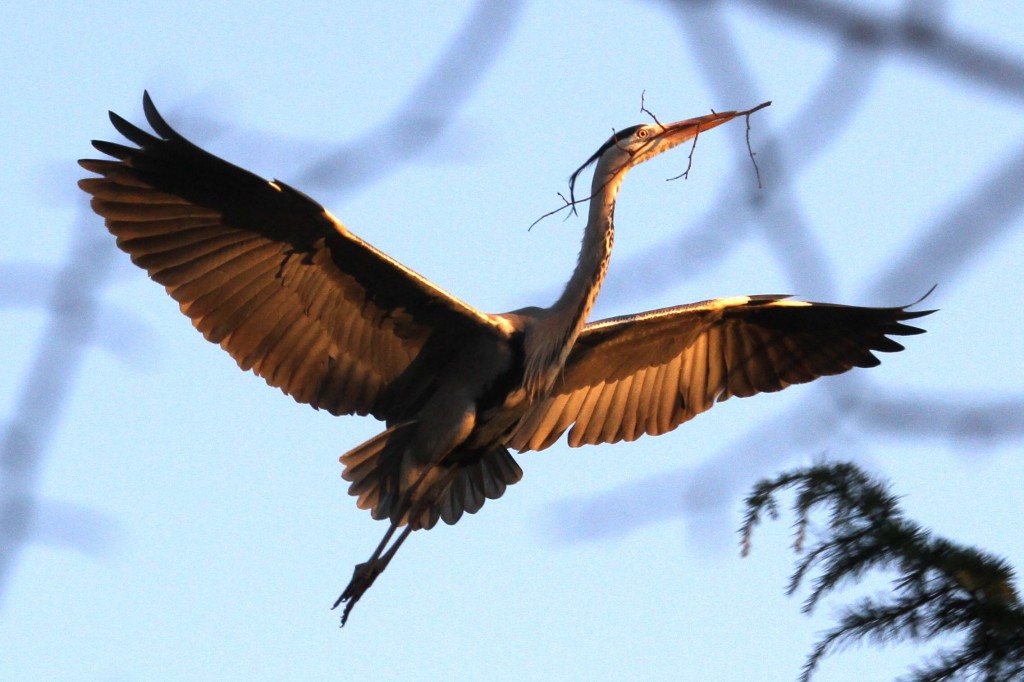
Quite a cold afternoon’s walk today; but the sun was up, the golfers were out, and so too were our local herons. I snapped this one just before sunset. He’s a Grey Heron (Aredea cinerea) and common in the UK. (I keep an eye out for the Blue Heron and super-rare Purple Heron, that occasionally visit the UK, but have seen neither.)
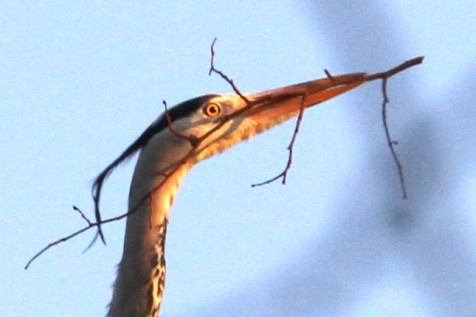
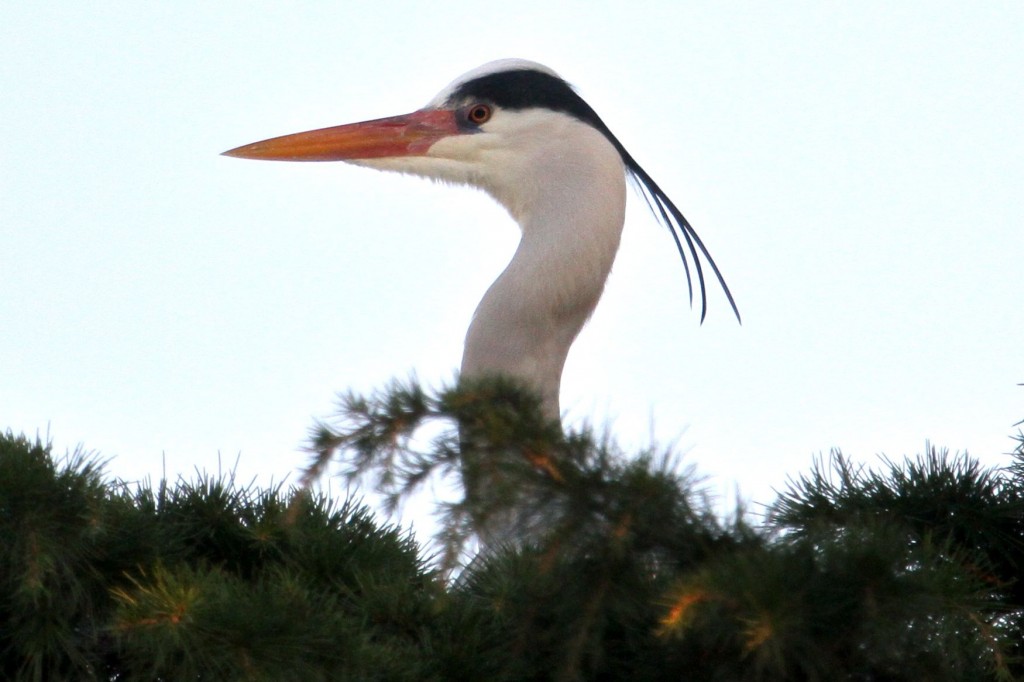
Herons nest in colonies, and this one looked like it contained three birds: two adults flying back and forth to the nest, and a smaller ‘second winter’ juvenile that stayed put (the one on the left of the pair in these shots).
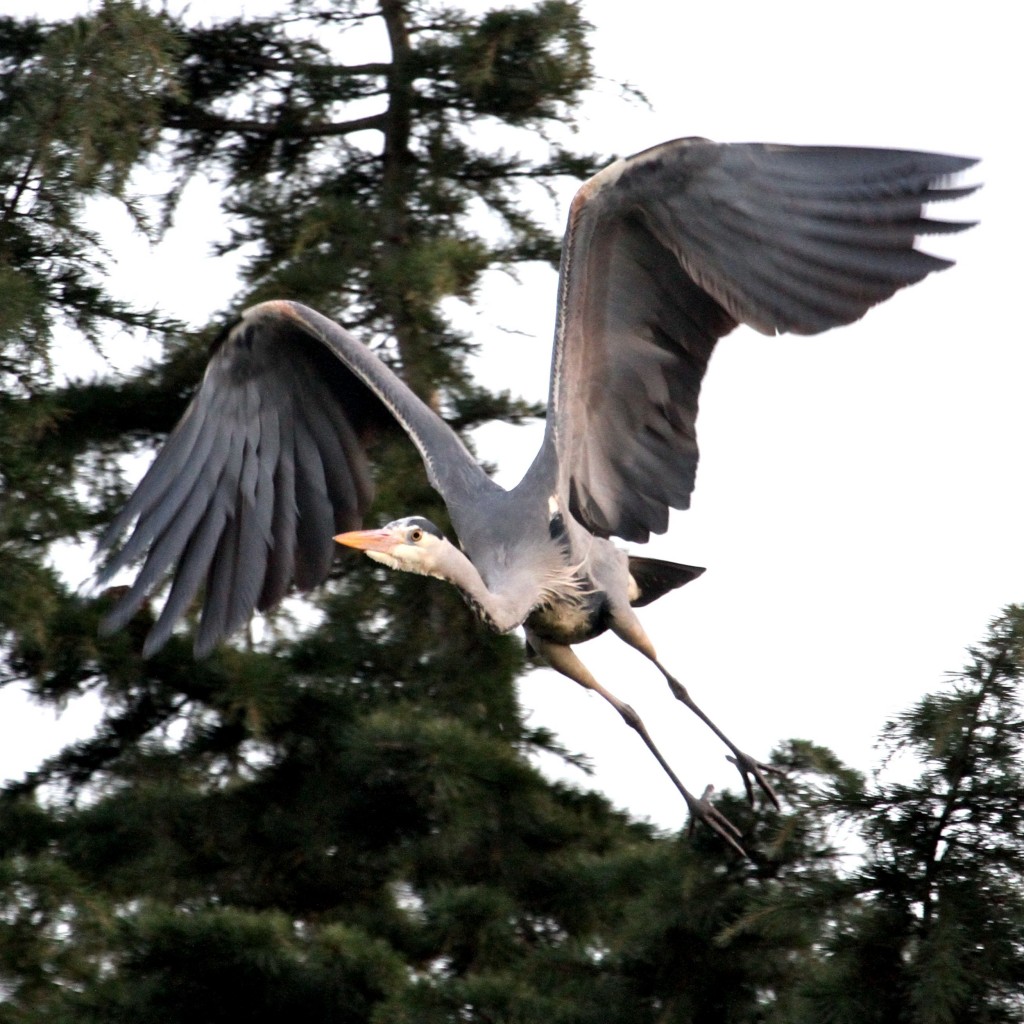
I was surprised to see nest-building this time of year, but the hardy heron’s extended breeding season sees them happily dropping eggs in late February. That’s not to say the smaller bird here is a chick – they leave the nest by 10 weeks, and this one’s plumage is too mature. I’m guessing it just wasn’t his/her shift for twig collection.
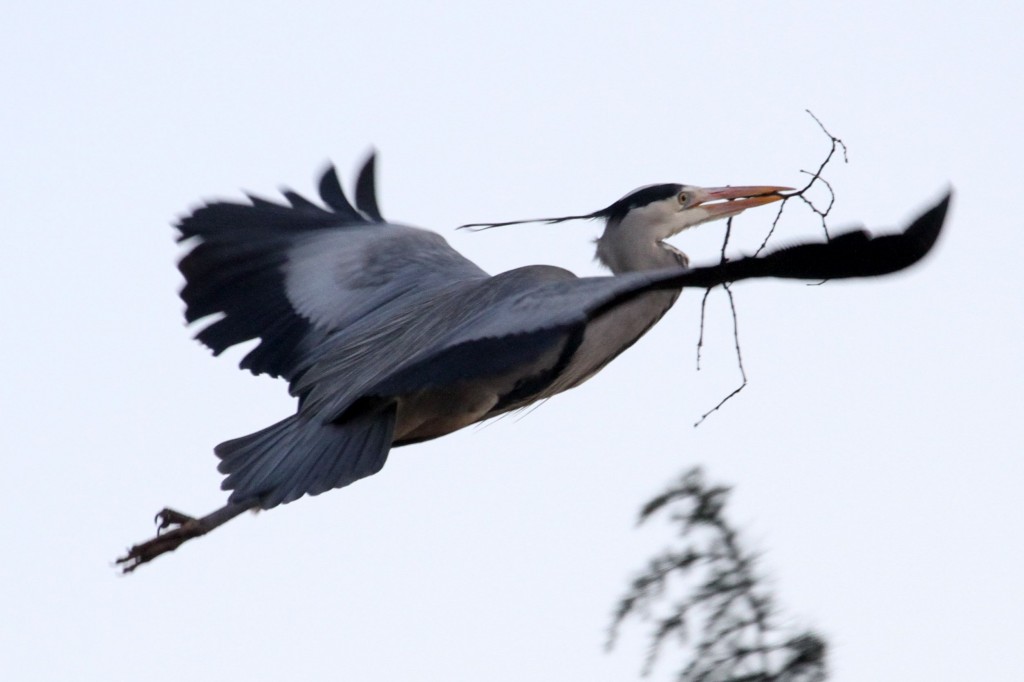
They’re fantastic birds to watch. Very noisy and, to my eyes, especially dinosaury. I also like the retracted neck position adopted for steady flight; it’s like their head goes along for the ride in upper-deck business class. It’s also one way to tell herons apart from cranes.
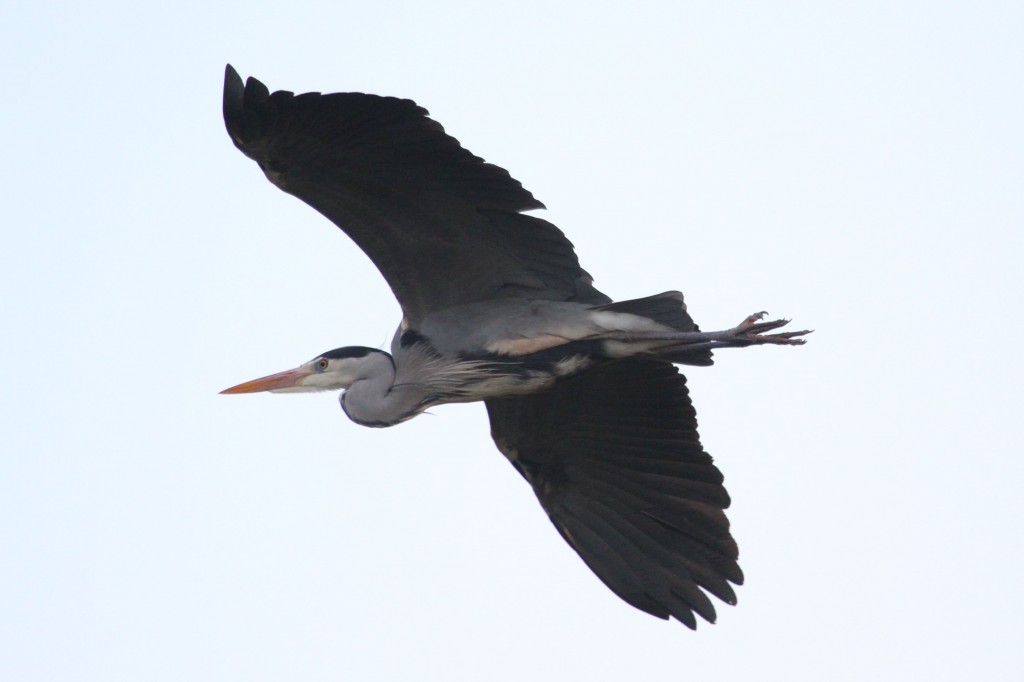
The Heron’s nest is a large flat platform of twigs in the top of a tree. The males do most of the collecting, the females most of the building.
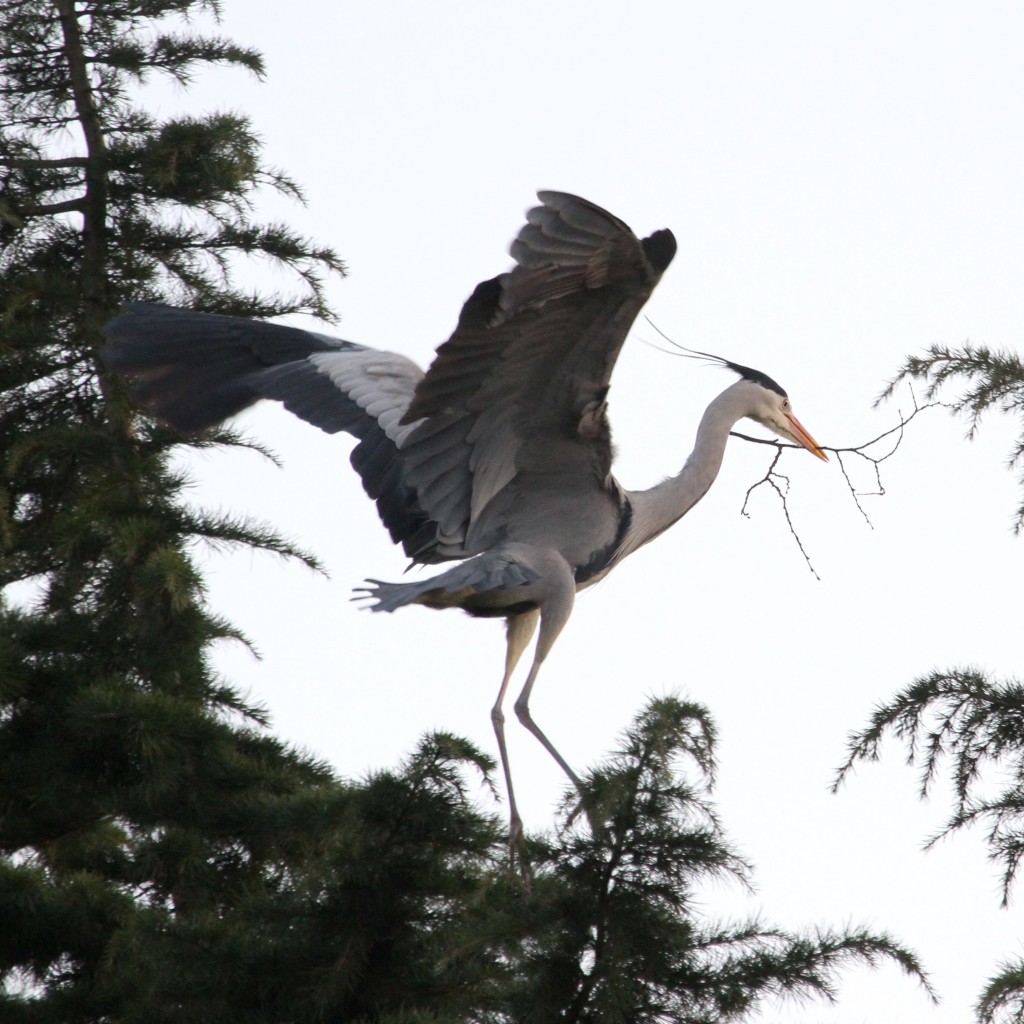
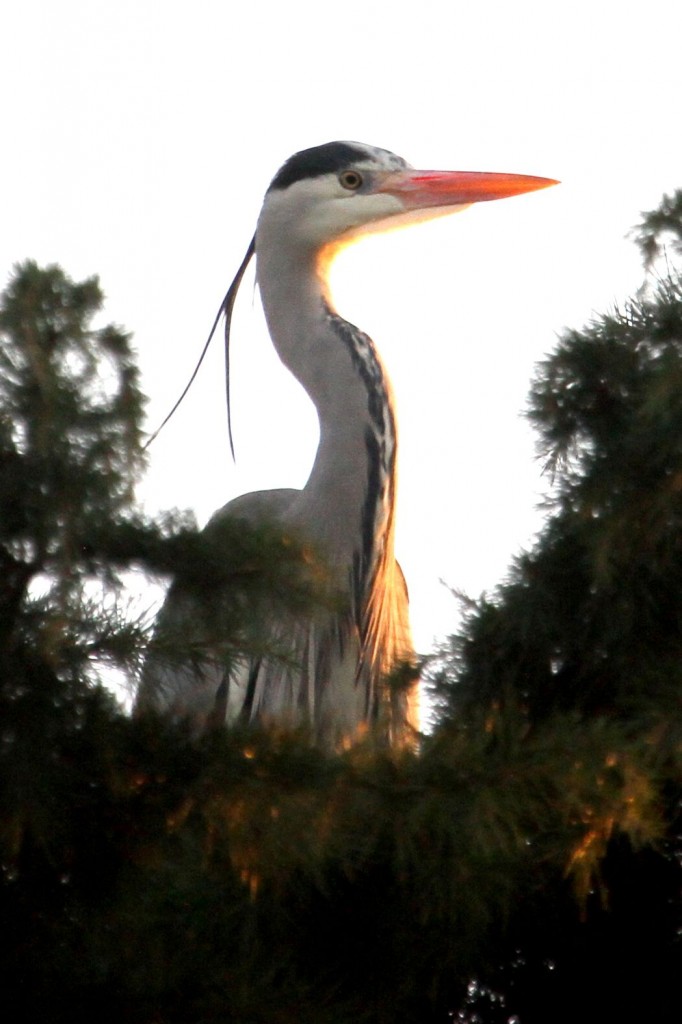
These last two shots of the nest show an adult bird on the right, and what I suspect is a ‘second winter’ juvenile on the left (tell me if you think differently). Despite the stance, there was no feeding going on here.
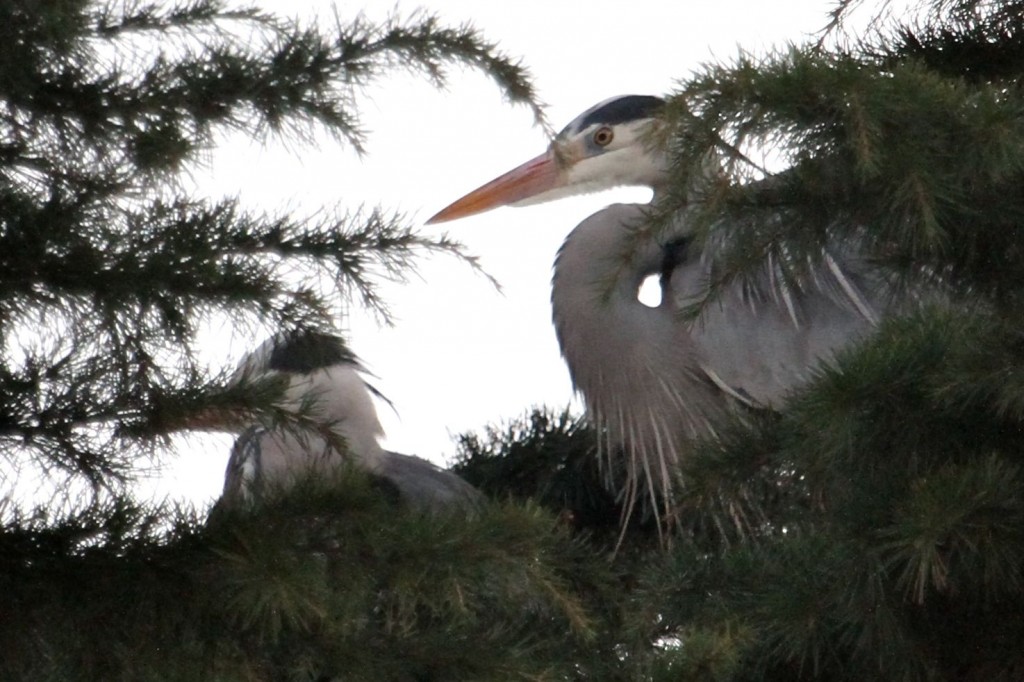
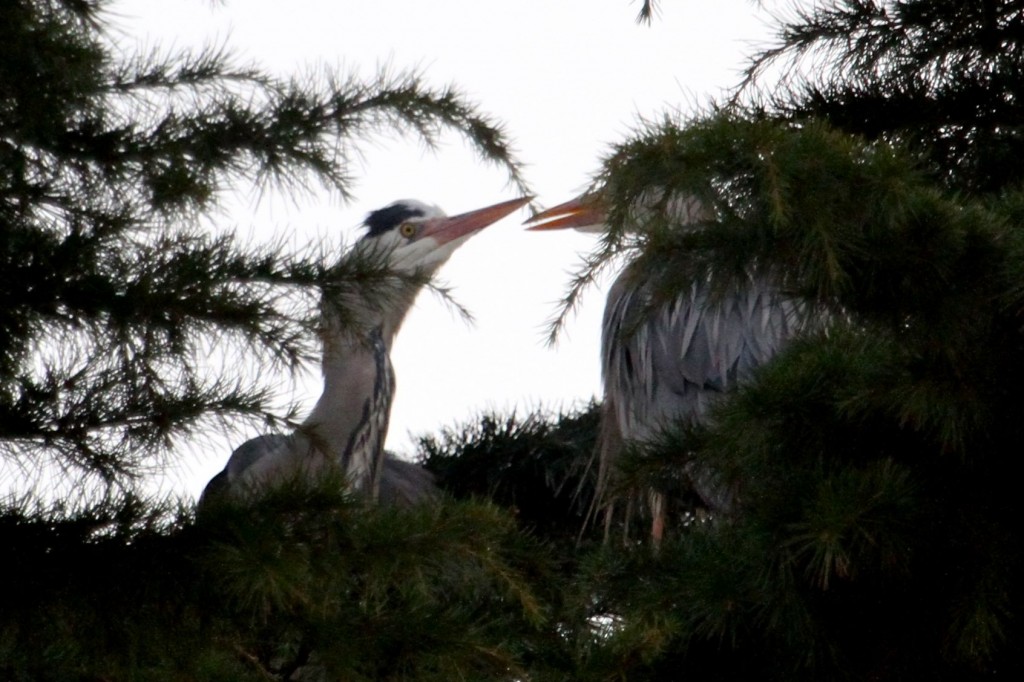
It’s days like this that justify carrying heavy cameras and lenses around on the off-chance something might show up. Next phase is to return with the tripod and get some HD movies of these guys. Watch this space!
Is it possible that I have seen a Grey Heron in my neighborhood ? I live in Philadelphia Pennsylvania USA . I took photos of what I believe to be a grey heron, however Ididnt think they were indigenous to this area ? Could you tell me if what I saw was just a runaway from our local zoo or is it possible to see a Grey heron in these parts.
Thank You
Hi Clarise,
Nice that you have herons at all!
The problem is the Great Blue Heron, which is native to the USA and even Canada at some times of the year, is very similar to the European Grey Heron. The Great Blue winters in Mexico but is year round in the southern US states and northern states (and even Canada) in the summertime.
According to our copy of Sibley’s Guide to Birds, there are no Greys in the US, and they don’t mention rare visitors either. Great Blues have more yellow eyes than the Grey, are longer by about 20cm, the beak is more orangey, and they have orange where their feathers meet their legs and on the wing leading edge (whereas Grey’s don’t). But they are very, very, similar. Great Blues only occasionally visit the UK, but I haven’t seen one.
So, I reckon you could have an escapee, or a Great Blue!
Tim